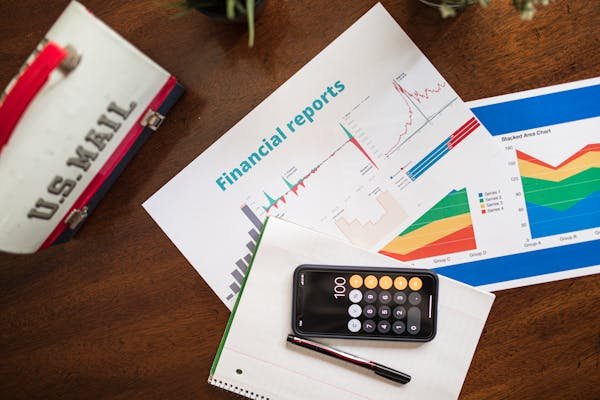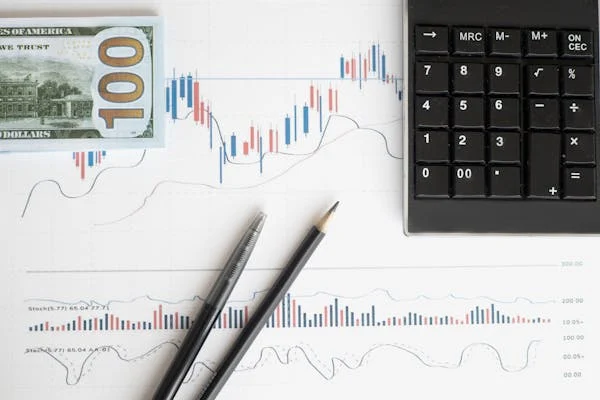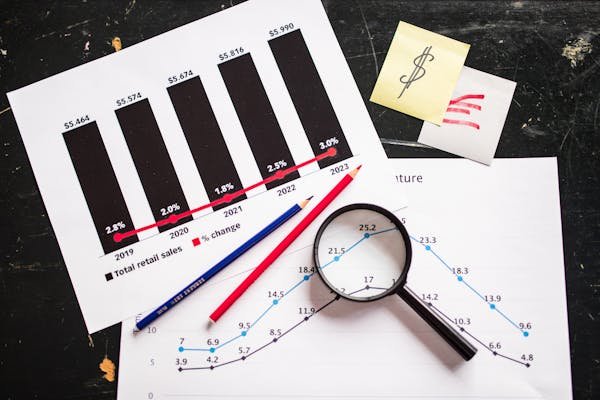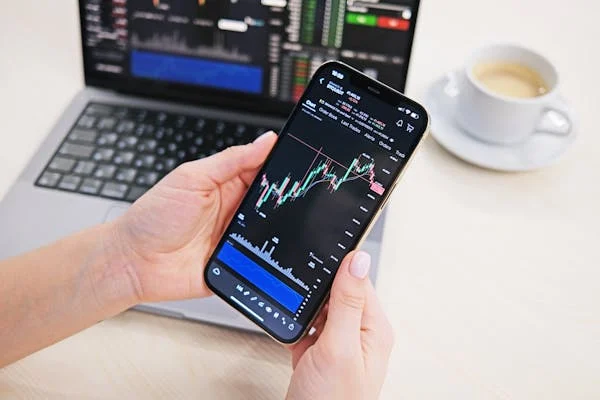Bundling isn’t just about grouping products. When done right, it’s a serious revenue engine. Whether you’re selling software, services, or physical goods, bundling shapes how customers buy—and how much they spend. In this article, we’ll break down 30 powerful stats, one at a time, each with detailed and simple advice you can apply right away.
1. 63% of consumers say they are more likely to purchase a bundle than individual products
Why consumer behavior makes bundling powerful
When nearly two-thirds of people prefer bundles over separate purchases, it’s no longer just a strategy—it’s a necessity. This stat reveals something important about human psychology. Shoppers love perceived value. They also hate making too many decisions. Bundles simplify choices and amplify value at the same time.
Actionable bundling strategies based on this stat
Start by bundling your bestsellers with lower-volume items. This creates a win-win. The popular product acts like a magnet, pulling attention toward the bundle. The slower-moving product rides the momentum and increases its exposure. Make sure the bundle’s name signals clear value. Don’t just say “Bundle A.” Try names like “Starter Pack” or “Essential Kit.”
Next, highlight the cost savings right on the product page. If the bundle saves $15 compared to buying items individually, make that obvious. Use phrases like “Save 18%” or “$15 Off When You Bundle.”
Finally, don’t assume bundling only works for physical goods. It applies to services, SaaS tools, and even info products. If you’re a coach selling digital courses, try bundling a course, a worksheet, and a consultation call together.
Consumers already want bundles. Your job is to give them ones that make sense and clearly communicate the benefit.
2. Companies using bundling strategies see an average revenue uplift of 20% per customer
Why bundling lifts average order values consistently
When you bundle effectively, you increase the amount customers spend in one go. A 20% revenue boost per customer isn’t a small number—it can be the difference between staying afloat and hitting your next growth stage.
Applying this to your business
Focus on creating bundles at different price points. One should be just above your average order value, and one should be at least 30–50% higher. This encourages people to “trade up” without much friction.
You can also use anchor pricing here. If you show three options—say, a single product, a small bundle, and a premium bundle—the middle option often performs best. It feels like the best value and the safest bet. You’re not pressuring customers into the highest price, but you’re giving them a clear path to spending more.
Another tactic? Bundle to solve a complete problem. If someone is buying skin care products, don’t just group random items. Think about what problem they’re solving—acne, dryness, dullness—and bundle accordingly. That’s how you create perceived value that supports a higher spend.
3. 42% of SaaS businesses report higher LTV when using feature-based bundling
How SaaS can boost retention through strategic packaging
This stat shows that SaaS isn’t about selling more features—it’s about packaging them correctly. When you bundle features that match user goals, people stay longer. Why? Because they feel like they’re getting exactly what they need.
The tactical side of feature bundling
Start by mapping features to user outcomes. If a feature helps with automation, group it with others that support speed or efficiency. Avoid bundling unrelated tools—it creates confusion and weakens perceived value.
Next, tie bundles to stages of growth. For example, your “Startup” plan could bundle analytics, onboarding, and live chat. Your “Scale” plan might include integrations, automation, and reporting. People are more likely to upgrade when the next tier solves their current pain point.
You can also use progressive feature release. Start customers on a basic bundle, then prompt them to upgrade by showing locked features they’re starting to need. This makes the next plan feel like a logical, not forced, step.
LTV goes up not just when you charge more—but when people use more of what they pay for. That’s what smart bundling enables.
4. Bundled products increase AOV (Average Order Value) by 30% on average
The AOV advantage: bundling for immediate impact
A 30% boost in AOV is significant. It means customers are willing to spend more in a single transaction when they perceive they’re getting more value. And the best part? This doesn’t require new customers—just better packaging for the ones you already have.
How to engineer AOV through bundling
Use “frequently bought together” logic. If you sell a laptop, bundle a mouse, keyboard, or software license. If you’re in eCommerce, this can be automated through tools that suggest bundles at checkout.
Create urgency through limited-time bundles. If a customer is browsing but hasn’t yet bought, a banner that says “Get all 3 for 30% off—today only” can nudge them forward.
Use price framing to make the bundle look like a deal. Show the full price if purchased separately, then display the bundle price clearly. This taps into the fear of missing out and frames the offer as too good to pass up.
When done well, bundling doesn’t just increase how much people buy—it also increases how much they enjoy the buying experience.
5. Cross-category bundling boosts upsell success rates by 25%
Why mixing product types works better than upselling alone
Cross-category bundling means you’re not just selling more of the same—you’re mixing complementary products from different categories. This approach creates value that customers didn’t know they needed. It’s not about more volume, but more relevance.
Upsell through smart pairings
Let’s say you sell coffee machines. A common upsell is a better machine. But a smarter cross-category bundle might include beans, mugs, or a descaling kit. The bundle now becomes a complete experience rather than a product upgrade.
This method works well in SaaS too. If your software has a core tool and add-on integrations, bundle those together. Don’t just push the premium plan. Instead, show how the core product becomes more powerful with analytics, CRM sync, or team workflows—all from different “categories” of function.
The key is customer journey mapping. Think through what your buyer will use next or what pairs naturally with their current purchase. That’s how you create bundles that feel intuitive, not pushy.
This stat also proves something important: upsells don’t have to feel like sales tactics. When done right, they feel like helpful suggestions.
6. 49% of consumers perceive bundled offers as better value, even without a discount
Why perception is more powerful than price
Nearly half of your audience already believes bundles are better value—even if they cost the same as buying items separately. This shows how much psychology influences purchase behavior.
Creating high-value perception without cutting into margins
Start with naming. Call your bundles something that speaks to the outcome—like “Productivity Pack” or “Growth Starter Kit.” This makes them feel purposeful, not just grouped items.
Next, work on presentation. Use visual packaging, mockups, or icons that show how items work together. A well-designed graphic showing everything in one neat unit adds a layer of polish and perceived value.
You can also include exclusives or bonuses that aren’t available a la carte. Even if the price is the same, the perceived exclusivity makes it feel like more. Think “only available in bundle” or “includes a bonus guide.”
The key takeaway is that you don’t need deep discounts. You need thoughtful curation and excellent presentation. When people believe they’re getting more, they spend more—and feel better about it.
7. Subscription services with bundle tiers retain 18% more users after 12 months
Retention through tiered access
Retention is the secret engine of growth. It’s cheaper to keep a customer than to win a new one. And bundled tiers—especially in subscription services—are a powerful retention lever.
Designing retention-boosting tiers
Start by understanding what keeps your customers engaged over time. For Netflix, it’s content. For software, it might be integrations or reporting. Once you know what adds long-term value, build tiers around those.
Lower tiers should solve the core problem. Higher tiers should offer enhanced experience—like speed, automation, or flexibility. Make the jump from one to the next feel like a natural progression, not a sales push.
Also, consider content or access bundles. In education platforms, this could be bundling courses with downloadable templates and expert Q&A sessions. The more valuable touchpoints a customer uses, the less likely they are to churn.
Retention isn’t just about keeping people paying. It’s about making them feel the product is growing with them. That’s what bundled tiers do best—they create continuity.
8. Personalized bundles drive 28% more conversions than static bundles
Personalization wins trust—and sales
This stat is a reminder: people want to feel understood. When a bundle is tailored to their needs, they’re much more likely to buy. Generic bundles still work—but they can’t match the power of personalization.
How to implement personalized bundling
Use data. If someone browses a product multiple times, build a bundle around it. If they always buy certain items together, offer a dynamic bundle the next time they visit. Tools like AI-driven recommenders or behavior tracking make this easier than ever.
You can also let users build their own bundles, but with guidance. For instance, show a “suggested for you” section where they can mix and match from a curated list. This makes it feel personal without overwhelming them.
Another approach? Segment your audience. First-time buyers get a starter bundle. Power users get advanced bundles with pro tools. Businesses get bundles focused on scale. Each version hits a different need.
This isn’t just about more conversions. It’s about better ones—where customers buy more and stay longer because the product fits like a glove.
9. Product bundles reduce cart abandonment by 15% in e-commerce
Turning indecision into action
Cart abandonment is one of eCommerce’s biggest leaks. Customers browse, click, add… and then leave. Bundling can plug that hole by making the decision easier and the offer more tempting.
Tactics to reduce drop-off with bundles
First, use bundled offers as exit intent. If someone moves to close the tab or navigate away, trigger a popup offering a time-limited bundle. For example: “Wait! Get all three for 20% off—only for the next 10 minutes.”
Second, bundle based on what’s in the cart. If someone adds a skincare serum, offer a cleansing oil and moisturizer together as a complete routine. This creates a sense of progress and completeness.
You can also highlight social proof. Display “Most customers buy this bundle” or “4.8 stars from 2,000+ buyers” under the bundle section. This builds trust and nudges action.
The magic here is simplicity. Bundles reduce the mental math of choosing multiple items, calculating costs, and wondering if it’s worth it. When that friction disappears, purchases happen more smoothly.
10. 61% of DTC brands report higher conversion rates using bundle discounts
Direct-to-consumer success is built on strategic bundling
In DTC, you often don’t have retailers or middlemen doing the selling. That means you need powerful tactics that work on your own turf. Bundled discounts are one of the most reliable.
Using bundles to create irresistible value
Start with your bestselling products. Build bundles around them by adding lower-cost, high-margin items. The perceived value goes up, while the real cost increase is small. It’s a win for both revenue and profit.
Next, use bundles in paid ad campaigns. A typical product ad might convert poorly, but “Buy 2, Get 1 Free” or “Starter Bundle for $49” grabs more attention and clicks.
Try rotating bundles too. Every week, feature a new bundle to keep things fresh. This keeps returning visitors engaged and gives you something new to promote in email or social.
Finally, test different discount types—percent off, dollar off, or free gifts. See which format drives the best ROI. The right type often depends on your average price point.
DTC success depends on optimizing every customer touchpoint. Bundled discounts give you a sharp tool for improving both acquisition and conversion.
11. Pre-configured bundles outperform build-your-own bundles by 12% in sales volume
Why curated bundles convert better than custom options
Customization is great, but it often comes with a problem—choice overload. When people are asked to build their own bundle, they can get stuck deciding what fits together. Pre-configured bundles remove that friction.
Crafting bundles that feel intentional and easy to buy
Start by choosing product combinations that already sell well together. Look at your order data. What do customers often buy in the same order? Use that to create a curated experience that feels seamless and helpful.
Then make sure each bundle solves a real problem. A “Home Office Kit” with a webcam, ring light, and ergonomic chair does more than offer products—it offers a complete solution. People don’t want to think through every small purchase; they want confidence that someone else already has.
Highlighting outcomes also boosts performance. Instead of naming a bundle after its parts, give it a goal-based name like “Productivity Booster Pack” or “Zero-Stress Travel Kit.” This shifts the conversation from price to purpose.
You can always allow customization later. But for driving sales volume, make the first offer as simple and specific as possible. People click and buy faster when the work is already done for them.
12. Bundling with complementary items raises attach rates by 35%
Complementary bundling increases not just revenue—but relevance
When you sell one product, it opens a window of opportunity. That’s when buyers are primed to pick up related items—especially if you package them the right way. Complementary items feel logical, not like upsells.
Creating bundles that make sense to the buyer
Complementarity is all about use cases. If someone buys a DSLR camera, they’ll likely need a memory card, carrying case, or extra battery. Bundle those and position them as “essentials.” The more natural the fit, the higher the attach rate.
The best time to offer these bundles is post-add-to-cart or during checkout. If they’re too early, the buyer may not see their value yet. But once they’ve committed to the main item, they’re more open to add-ons that make it work better.
Also consider using “You may also need…” bundles rather than just suggestions. The psychological difference is key. It tells the user these items are part of the full experience—not optional extras.

In SaaS, this could mean bundling a CRM tool with data import templates and an onboarding session. In B2B services, it might be pairing strategy consulting with implementation support. Think beyond the core product—think ecosystem.
13. Dynamic bundling algorithms can improve bundle take-rate by up to 50%
Why real-time bundling beats static offers
Dynamic bundling uses data to adjust offers in real time. It looks at what users are doing—what they’ve viewed, clicked, or bought—and builds bundles on the fly. And when done right, it performs far better than pre-set options.
How to use dynamic bundling in your funnel
This works best with a recommendation engine. If your store tracks browsing behavior, you can instantly offer bundles based on past interests. A user who looked at running shoes and water bottles might get a “Fitness Kickstart Pack” shown during checkout.
You don’t need fancy AI to start. Even basic tagging systems can trigger relevant bundles. Group products into use-case buckets, then trigger bundles when someone browses multiple items in that group.
Another tactic is dynamic pricing within bundles. For example, if a customer adds Item A to the cart, your system could suggest Bundle AB for 15% off—based on their exact activity, not static logic.
This level of relevance creates a sense of personalization. It doesn’t feel like a generic promotion—it feels like a bundle made just for them. And that’s what drives the take-rate through the roof.
14. Freemium-to-paid conversions are 2.4x higher with bundle-exclusive features
Bundling unlocks freemium growth
Freemium models often struggle to convert users into paying customers. The trick is not just to offer more features—but to package them into compelling bundles that feel like a real upgrade.
Building bundles that move users up the funnel
Don’t just unlock one feature. Create bundles that tell a story. For example, a user on a freemium writing app might see a “Pro Writer Bundle” that includes grammar tools, plagiarism checkers, and export options. Together, they deliver a complete experience, not just more buttons.
Exclusive access also plays a role. Position the bundle as something only paying users get—not available a la carte. The more exclusive it feels, the more valuable it becomes.
You can also add time-limited access. For instance, “Try the Growth Bundle for 14 days, then decide.” This gives users a taste of the full experience, increasing their likelihood to convert.
Remember: People don’t upgrade for more features. They upgrade for more value. Bundled features that solve bigger problems create the kind of lift that a single add-on can’t match.
15. 57% of B2B buyers prefer bundled pricing over itemized quotes
Simplicity wins in B2B too
B2B buyers are busy. They’re evaluating multiple vendors, checking ROI, and often dealing with internal approvals. Bundled pricing simplifies the decision and makes budget conversations easier.
Selling more by quoting less
Start by understanding what outcomes the buyer is looking for. Then build a solution bundle that achieves those outcomes—and price it as a single line item. This makes the value easier to grasp and the offer easier to justify.
Avoid over-explaining each component. Instead of listing every tool or hour of service, focus on the result: “Marketing Automation Bundle – $4,000/month – includes campaign setup, lead scoring, and reporting.”
This also helps during procurement. Decision-makers don’t want to approve 12 separate line items. They want clarity. A single bundle with defined deliverables is faster to approve and harder to compare against competitors.
The best part? It allows you to embed premium items in the bundle without making them a cost battleground. You protect your margin while giving the buyer a clear, attractive offer.
16. Bundled digital products have 19% higher perceived value than unbundled
Why digital bundles feel more valuable—without raising cost
Digital products, like eBooks, templates, videos, or apps, have very low marginal cost. But when bundled, they instantly feel like they’re worth more. This stat shows how perception shapes pricing power—even in zero-inventory businesses.
Turning digital assets into high-value bundles
Start by combining related assets into outcome-based bundles. Instead of selling a single course for $99, offer a “Startup Growth Bundle” that includes the course, worksheets, a strategy checklist, and a bonus video Q&A. Even if the extras cost nothing to deliver, they create layered value.
Another tactic is to name your bundles like products. Don’t just list contents—brand the bundle. Names like “Launch Lab” or “Content Mastery System” give it product-like appeal and help it stand out.
Digital bundles also work well with urgency. Try flash bundles that are only available for 72 hours. This encourages fast decision-making while maximizing perceived value.

Use testimonials and previews to reinforce that each part of the bundle matters. Show how others used the entire pack to solve a problem, not just one piece of it. That way, buyers see the bundle as essential, not optional.
17. Telecoms using service bundling retain 22% more customers annually
Lessons from telecom: retain more by giving more, together
Telecom companies have long been masters of bundling—phone, internet, TV, and mobile. Why? Because when customers get everything in one place, they’re less likely to leave. That same logic applies to SaaS, media, education, and even retail.
Applying telecom tactics to your retention strategy
Think about the services or features customers use most. Can you offer those in a single monthly package that feels like the full solution? If they rely on you for multiple needs, switching becomes harder.
You can also layer in bonus perks. Telecoms often throw in HBO or Netflix. In your case, it could be access to premium support, early access to features, or free onboarding sessions.
Use time-based bundles too. Offer a yearly plan that includes bonus services—like 2 months free of a secondary product. This not only locks in revenue but also makes the relationship feel more long-term.
Finally, make bundled billing seamless. When customers get one simple invoice for everything they need, they stop thinking about switching. They’re too busy using the value you’ve packaged together.
18. 70% of customers are willing to pay more for bundles with flexible options
Flexibility increases willingness to pay
Most customers don’t mind paying more—as long as they feel in control. This stat proves that bundling isn’t just about saving money. It’s about giving customers a sense of choice within a structure.
Designing flexible bundles that feel customizable
One way to offer flexibility is through mix-and-match bundles. Let customers choose three products from a selection of ten, but price it as one package. They feel empowered, and you still control the offering.
Another strategy is tiered bundling. Have a “basic,” “advanced,” and “custom” bundle. The custom version allows buyers to swap out one or two components. This keeps the economics in your favor but satisfies the user’s need for control.
In software, this could mean letting users pick which integrations are included in their plan. For agencies, it could be letting clients choose between ad management or SEO reports in their monthly package.
Communicate flexibility clearly in your marketing. Use words like “tailor,” “adjust,” and “your way.” Customers don’t want rigid products. They want personalized solutions with the simplicity of a bundle.
19. Bundled SaaS plans see 31% lower churn than a la carte plans
The stickiness of bundles
In SaaS, churn kills growth. Every point of churn you reduce boosts your bottom line. Bundles reduce churn because they make the customer feel like they’re getting more—often for less.
Bundling for better retention
Start by bundling must-have tools with nice-to-have features. The essential tools keep users engaged. The extras make them feel like they’re getting premium service—even if they rarely use all of them.
You can also use bundles to reduce decision fatigue. If a user has to decide which features to keep every month, they may eventually cancel. But if they’re on a “Business Growth Suite” plan that covers everything they need, they’re less likely to think about canceling.
Showcase bundles during onboarding. Help users explore all the included features right away. The more tools they try, the more likely they are to find value—and the more reasons they’ll have to stay.
Bundles also help manage expectations. If users get everything in a single package, they see your product as complete—not piecemeal. That completeness is what makes them feel satisfied, not searching.
20. 46% of eCommerce bundles include at least one slow-moving SKU to boost turnover
Using bundles to move inventory—without heavy discounts
Slow-moving SKUs are every retailer’s headache. They take up space, tie up capital, and drag down performance. This stat shows how bundling can solve that—without fire sales or deep markdowns.
Turning underperformers into value-adds
Identify slow movers that complement faster products. If you sell headphones, and headphone cases aren’t moving, bundle them. If water bottles aren’t selling, pair them with fitness gear that is.
But don’t frame it as a clearance deal. Present the bundle as a limited-edition combo or a “pro-level” upgrade. The goal is to reposition the slow-moving item as something valuable in the right context.

Keep the bundle pricing focused on value, not desperation. For example: “Get this $20 bottle for only $5 when you buy the yoga mat bundle.” You still preserve perceived value while moving inventory.
Track performance closely. If a certain SKU keeps getting skipped, rotate it out. Bundling is both art and optimization. Use it to keep your catalog fresh and your inventory moving.
21. Tiered bundling increases upsell rates by 26% compared to flat pricing
The power of choices in bundles
When customers are offered only one bundle, they either take it or leave it. But when you present multiple tiers—each offering more value—they start comparing the options instead of questioning the purchase. This subtle shift leads to more upsells and higher revenue.
Structuring your tiers for maximum effect
Use the classic three-tier model: basic, standard, and premium. Most customers will gravitate toward the middle option, which feels safe and fairly priced. Your standard bundle should be the one you want to sell the most—it becomes the anchor.
Each tier should solve a specific customer need. The basic tier solves one problem. The middle tier adds convenience or saves time. The top tier adds personalization, priority support, or advanced capabilities. This progression makes the jump to the next level feel like a smart decision, not a stretch.
Also, show comparison charts that highlight differences between tiers. Make sure the added benefits at each level are easy to understand. Simplicity sells.
When done right, tiered bundling doesn’t just offer more options—it guides customers to spend more, confidently.
22. Subscription boxes with bundled add-ons see a 33% increase in ARPU
Boosting average revenue per user with smart extras
Subscription boxes succeed by delivering value on autopilot. But the most successful ones don’t stop at the monthly box—they boost revenue with optional bundled add-ons. This raises ARPU without raising churn.
How to bundle for optional upgrades
Offer pre-bundled add-ons during checkout. For example, if your subscription box is skincare, offer a seasonal “Glow Boost Bundle” with extra serums and masks for an additional fee. Keep it relevant and fresh.
Use urgency. “Add this bundle to your next box—only available for the next 48 hours.” This turns an optional upgrade into a now-or-never decision.
Make your add-on bundle easy to understand. Use a single name, a single price, and clear value. Don’t list every component—focus on the benefit: “Upgrade your next box with $60 worth of spa-grade treatments for just $18.”
Track uptake and rotate bundles monthly. The novelty keeps people engaged, and the upsells compound over time.
ARPU doesn’t just grow from price hikes. It grows from consistently giving subscribers something extra to say yes to.
23. 64% of mobile app users engage more when content is bundled by theme
Themed bundles keep users coming back
In mobile apps—especially in content, learning, or wellness categories—users don’t want to browse endlessly. They want relevance fast. Bundled content by theme satisfies this need and increases in-app engagement.
Designing thematic content bundles that increase usage
Group content based on goals, not formats. Instead of offering “videos” or “articles,” offer bundles like “30-Day Mindfulness Challenge” or “Productivity Master Pack.” These become easy-to-follow pathways that feel curated.
Use progress indicators. If users see a checklist or completion bar tied to a bundle, they’re more likely to stick with it. The more they complete, the more invested they become.
Promote themed bundles inside the app with banner placements, notifications, or onboarding flows. This gives new users an immediate place to start.

The result? They stop browsing and start consuming. That shift in behavior is what increases stickiness and long-term app value.
Whether you’re offering meditations, workouts, or business lessons, thematic bundles transform scattered content into purpose-driven journeys.
24. Bundled services in hospitality lead to 29% higher guest spending per stay
How hospitality uses bundling to enhance guest value
Hotels and resorts aren’t just selling rooms—they’re selling experiences. When services like dining, spa, and transport are bundled, the guest spends more and feels like they’re getting a deal.
Creating experience-based bundles that guests love
Design bundles around occasions: “Romantic Getaway Package,” “Family Adventure Bundle,” or “Spa & Stay Wellness Deal.” Each one should combine accommodations with relevant services that elevate the stay.
Clearly list what’s included—like breakfast, late checkout, or a welcome drink—but highlight the feeling more than the features. “Unwind from the moment you arrive” sells better than “Includes foot massage.”
Use visual presentation to show the bundle lifestyle. Photos of couples dining, kids playing, or a spa scene convey emotional value that the item list can’t.
Guests spending more doesn’t come from forcing extras—it comes from bundling things they already want in a way that feels like a unique experience. That’s what drives higher per-stay revenue.
25. Product bundling increases customer acquisition efficiency by 21%
Bundles don’t just improve sales—they lower cost per acquisition
When a bundle is well-priced and clearly valuable, it becomes a powerful conversion tool. You spend less on ads, get better click-through rates, and convert more first-time buyers.
Making your bundles acquisition magnets
Use bundles as entry offers. A “Starter Pack” that gives new customers everything they need to get going works better than a single product because it removes uncertainty.
Run paid ads that focus on the bundle—not individual products. Highlight the savings, the outcome, and the simplicity. “Everything you need to get started—40% off today only” speaks to new customers better than a single SKU.
Test bundle-focused landing pages with clear call-to-actions. Include testimonials from customers who started with the bundle and loved it. This builds trust fast.
Acquisition efficiency is about making your ad dollars go further. A great bundle does that by turning cold clicks into high-value customers at a better return.
26. Limited-time bundle promotions drive 3.7x higher click-through rates
Urgency and bundling: a perfect pair for engagement
People respond to urgency. They don’t want to miss out. When you combine bundling with limited-time offers, the fear of missing a deal spikes engagement—especially in email and ad campaigns.
Structuring time-sensitive bundles for action
Run 72-hour flash bundle sales. Feature them prominently on your homepage, in popups, and on social. Use language like “3 Days Only” or “Bundle Deal Ends Friday” to set a clear deadline.
Make the bundle valuable enough to act on—but don’t overcomplicate it. One bundle, one offer, one call-to-action. Too many options dilute urgency.

Use timers in emails or landing pages. Visual countdowns reinforce the urgency and encourage immediate clicks.
This strategy works particularly well for holidays, seasonal events, or product launches. It creates a sense of occasion—and people click when something feels timely and exciting.
27. 60% of companies say bundling improves sales forecasting accuracy
Predictability through packaging
When you sell items one by one, forecasting is tough. Bundles simplify things. You move inventory in blocks, drive consistent revenue per transaction, and smooth out product-level noise.
How bundling brings more predictable growth
Group high-margin items with consistent sellers. When the bundle sells, you know the margin and volume upfront. This allows you to better plan inventory, logistics, and campaign pacing.
Offer bundles as the default on your product page. When most customers pick bundles over single products, your forecasting becomes more tied to bundle behavior than fragmented SKUs.
Track bundle performance separately from individual items. This gives you clearer signals on which packages work and which need improvement.
Better forecasting doesn’t just help operations. It also supports better decision-making in sales and marketing—because you know what sells well, together.
28. SaaS bundles with tiered feature access yield 24% higher enterprise adoption
Selling into enterprise with the right bundle structure
Enterprise buyers need different things than solo users. They want features that support scale, security, and collaboration. When you bundle those features into distinct tiers, adoption increases.
Structuring enterprise-friendly SaaS bundles
Create bundles that speak directly to business needs: “Team Collaboration Suite,” “Enterprise Security Bundle,” “Automation and Reporting Pro Pack.” Don’t focus on features—focus on the outcomes they drive.
Highlight the ROI of each bundle. Instead of “Includes Role-Based Access,” say “Secure your data with team-specific permissions.” Always tie features to business impact.
Allow trial periods of enterprise bundles. This lowers resistance and gives decision-makers a taste of what’s possible. Once embedded, it’s harder to remove.
Tiered access also supports cross-sell over time. Start with a mid-level bundle, then offer upgrades as needs grow. Each step feels like a natural evolution rather than a hard upsell.
29. Retailers using smart bundling see a 40% faster inventory turnover
Using bundles to keep stock moving
Stagnant inventory hurts cash flow. Bundling can fix that—if you do it strategically. This stat proves that with the right combinations, you not only sell more, but you sell faster.
Accelerating sell-through with smart bundling
Match overstocked items with fast sellers in a way that adds value. If your best-selling jeans fly off the shelves, pair them with slow-moving belts in a “Style Upgrade Pack.”
Offer seasonal bundles to create urgency. “Spring Refresh Bundle” or “Back-to-School Kit” gives context for why the purchase should happen now.
Track bundle-specific inventory metrics. If a bundle sells faster than its individual parts, lean into it. If one item holds the bundle back, try a new mix.
Inventory turnover is all about movement. Bundling creates that movement—not just through price, but through smarter packaging and timing.
30. In trials, bundling led to a 17% higher likelihood of product trial-to-purchase
Converting trials into customers with bundled value
Free trials are great for sampling, but not always for closing. Bundles help bridge that gap by showing users what a complete solution looks like—and making it easier to say yes.
Using bundles to guide trial users toward conversion
Offer a “First-Time Bundle” post-trial. Include the product they tried plus one or two extras that enhance it. This gives them a next step that feels like more than just paying—it feels like upgrading.
Frame the bundle as limited or exclusive. “Trial Member Special: Unlock the Full Experience for 30% Off” makes the transition feel like a reward, not a cost.

Make it easy to buy. The fewer decisions a trial user has to make post-trial, the more likely they’ll continue. Bundling reduces decision fatigue and shows the user you’ve already mapped their path forward.
A trial user has already said yes once. A thoughtful bundle helps them say yes again—this time with their wallet.
Conclusion
Bundling is one of the most underutilized strategies in the business playbook. Yet, as you’ve seen from these 30 data-backed insights, the impact is undeniable—whether you’re selling software, physical products, subscriptions, or services.





















